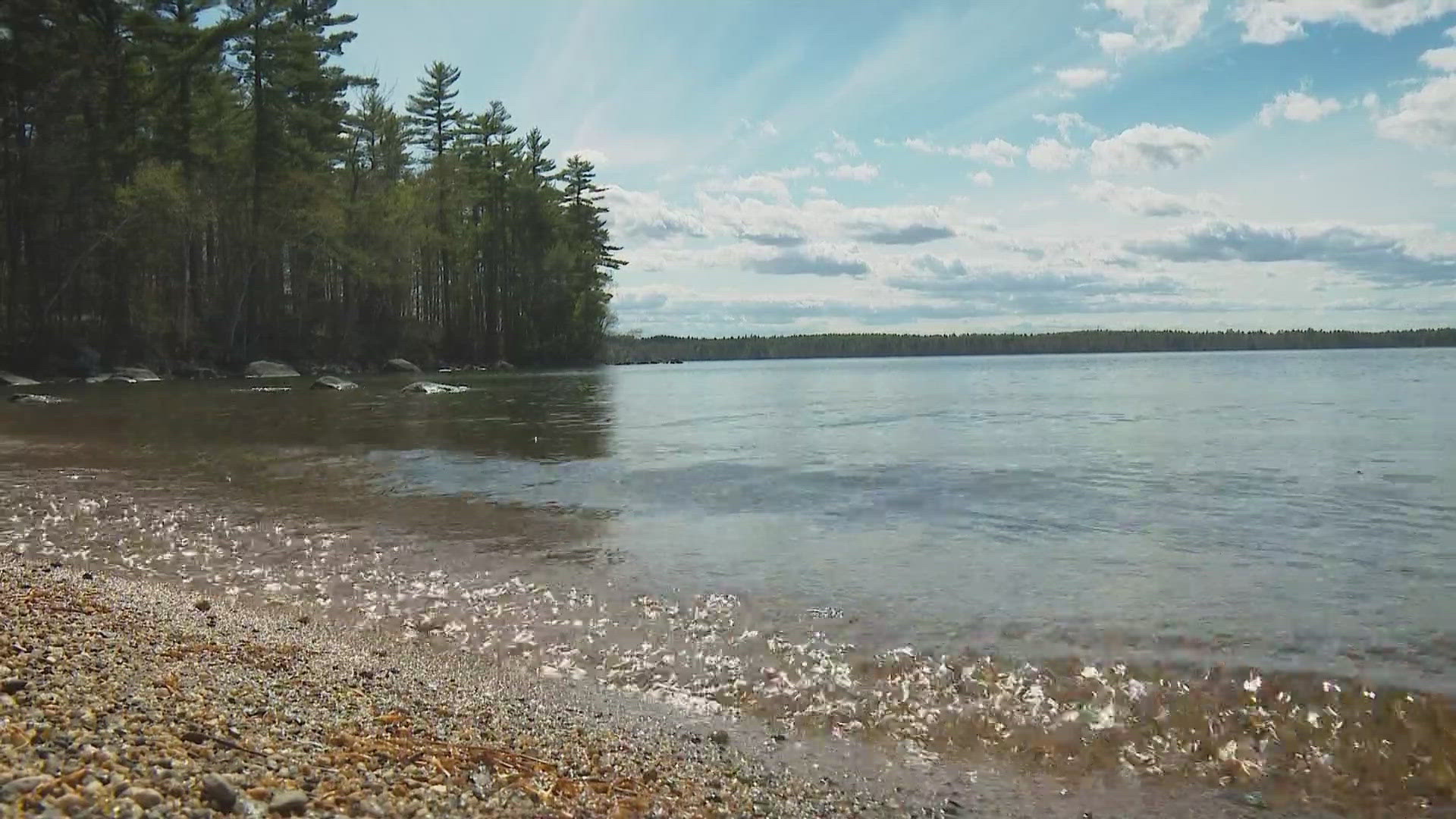STANDISH, Maine — One of the largest sources of drinking water in Maine is already testing below the new federal requirement for toxic chemicals.
In April, the Environmental Protection Agency announced the first-ever national drinking water standards to protect people from PFAS pollution. Exposure to PFAS has been linked to deadly cancers, impacts to the liver and heart, and immune and developmental damage to infants and children.
The EPA is setting enforceable Maximum Contaminant Levels at 4.0 parts per trillion for PFOA and PFOS, individually.
The Portland Water District serves 16 percent of Maine's population. The district said its equipment is capable of testing down as low as 2.0 parts per trillion, and it has not detected any PFAS in Sebago Lake, which is its primary source of drinking water.
Of the nearly 13,000 water supplies nationwide that use a lake or river, only 50 do not require filtration. Sebago Lake is one of those 50 because of the excellent natural filtration the forest, soil, and sand provide, staff said.
"We're so fortunate that it's so clean, including when we test for PFAS. We can't even detect it at the levels the instruments read, and it's surrounded by forested land. That's why contaminants don't make their way all the way to our intake," Paul Hunt, environmental manager for the Portland Water District, said. "We're the envy of all of our colleagues around the country. It almost seems unfair, but that's because the people of Maine have cared for this watershed and continue to."
Hunt said humans who live around Sebago Lake are undoubtedly introducing PFAS chemicals into the environment, but the natural filtration prevents them from entering the lake and, subsequently, the drinking water supply.
"This natural system is removing them, or at least they're not getting above a concentration, so it already is working," Hunt said. "Will it always work? I don't want to find out by removing the forest. Let's see if we can keep it intact. And I think I think it's a 'no regrets' strategy. It will always be working for us while we sleep."
The EPA estimates that between about 6 percent and 10 percent of the 66,000 public drinking water systems subject to this rule may have to take action to reduce PFAS to meet these new standards.
All public water systems have three years to complete their initial monitoring for these chemicals. They must inform the public of the level of PFAS measured in their drinking water. Systems where PFAS is found at levels that exceed these standards must implement solutions to reduce PFAS in their drinking water within five years.
The EPA announced nearly $1 billion in newly available funding through the Bipartisan Infrastructure Law to help states and territories implement PFAS testing and treatment at public water systems. That money also can help owners of private wells address PFAS contamination.
This is part of a $9 billion investment through the Bipartisan Infrastructure Law to help communities with drinking water impacted by PFAS and other emerging contaminants – the largest-ever investment in tackling PFAS pollution.
The Bangor Water District reported that a sample collected at the entrance to our distribution system in June 2022 was analyzed for 18 types of PFAS. The results were “non-detect,” meaning less than the minimum reporting level (MRL) of 1.8 parts per trillion. NEWS CENTER Maine is waiting for updated test results from BWD staff.
"Bangor Water protects our source of supply from PFAS and other contaminants by land ownership and conservation agreements that limit human activity in the Floods Pond watershed. 5,611 acres (over 98%) of the watershed is currently controlled by Bangor Water," according to the Bangor Water District website.
Lake Auburn, which is the primary public water source for the greater Lewiston-Auburn communities, reported in 2022 that there were no detections of PFAS compounds in the drinking water source.
"[It] is a result of watershed protections that prevented common practices that are known to spread these compounds, such as land application of wastewater sludge and use of certain firefighting foams, around Lake Auburn," the Auburn Water District said in its annual water quality report.
NEWS CENTER Maine reached out to several other large water districts in the state to learn more about current PFAS levels in their drinking water supplies, as well as the efforts those entities have already made to combat the issue. We have not yet received responses and will update this story when that information becomes available.

